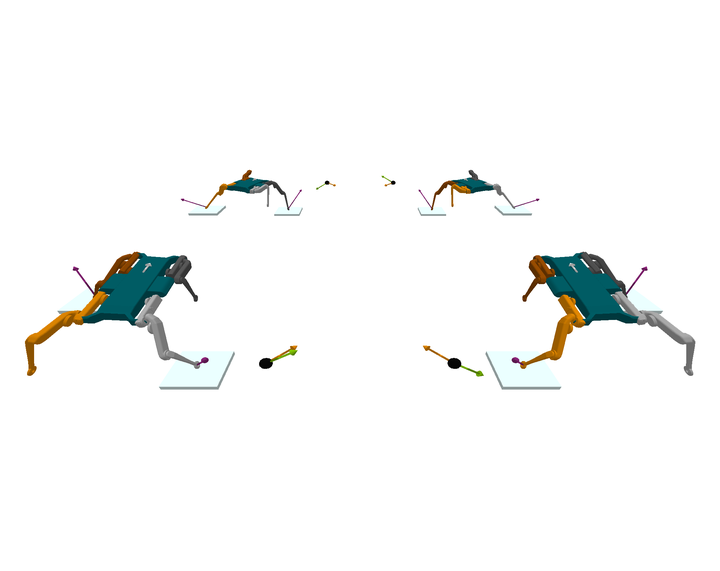On discrete symmetries of robotic systems: A data-driven and group-theoretic analysis

Abstract
We present a comprehensive study on discrete morphological symmetries of dynamical systems, which are commonly observed in biological and artificial locomoting systems, such as legged, swimming, and flying animals/robots/virtual characters. These symmetries arise from the presence of one or more planes/axis of symmetry in the system’s morphology, resulting in harmonious duplication and distribution of body parts. Significantly, we characterize how morphological symmetries extend to symmetries in the system’s dynamics, optimal control policies, and in all proprioceptive and exteroceptive measurements related to the system’s dynamics evolution. In the context of data-driven methods, symmetry represents an inductive bias that justifies the use of data augmentation or symmetric function approximators. To tackle this, we present a theoretical and practical framework for identifying the system’s morphological symmetry group
For intuition before theory, see the following presentation video. For theory read the paper. For fun and experimentation see the MorphoSymm repository.